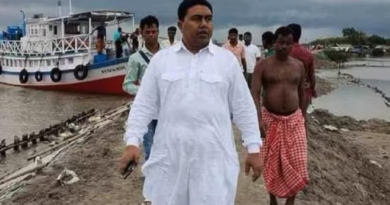Tragedy Strikes at Midnight: Nepal Quake Claims 132 Lives, Shakes North India with Powerful Tremors

New Delhi: A powerful 6.4 magnitude earthquake struck Nepal at midnight on Friday, leading to the tragic loss of at least 132 lives and causing injuries to over 100 individuals. The earthquake’s impact was felt as far as the Indian states of Rajasthan, Uttar Pradesh, and Bihar, as well as the Delhi-NCR region. The epicenter of the earthquake was located in Lamidanda, near Jajrakot, approximately 142 km from Kathmandu and 941 km from New Delhi. Rescue efforts are ongoing, and the death toll in Nepal may rise.
Nepal’s seismic vulnerability stems from its location at the collision point of the Indian and Eurasian tectonic plates. The ongoing plate convergence accumulates strain energy, leading to frequent and potentially devastating earthquakes. This geological setting makes Nepal highly prone to seismic activity, often resulting in tragic consequences. In 2015, a devastating 7.8 magnitude earthquake and its aftershocks claimed the lives of approximately 9,000 people. The recent midnight earthquake is the third to strike Nepal in a month. On October 2, two earthquakes measuring 6.2 and 4.6 in magnitude shook the region. On October 22, a 6.1 magnitude earthquake struck with its epicenter located near Dhading, 55 km from Kathmandu.
In the wake of the earthquake and aftershocks, residents spent the night outdoors amid the debris, fearing further tremors. Prime Minister Pushpa Kamal Dahal, known as “Prachanda,” expressed his deep sorrow over the loss of lives and property and immediately mobilized all three security agencies for rescue and relief efforts. Communication has been disrupted in many areas in Nepal. The rescue operation is ongoing, and additional assistance may be required as the situation unfold .
India must adopt several key precautions to mitigate the risks of earthquakes. First, enforce and update seismic building codes to ensure earthquake-resistant structures. Second, implement an effective early warning system to provide advance notice. Third, raise public awareness through education and drills. Fourth, design critical infrastructure with earthquake resilience in mind. Finally, foster international collaboration with neighboring countries for knowledge-sharing and resource pooling. These measures will enhance India’s preparedness and reduce the impact of seismic events, safeguarding lives and infrastructure in this high-risk seismic region.





